We actually made it out of the UK. First time in two years, hoping for some warmth but most days were as windy as we've experience at home of late with added rain most nights with heavy showers on several days. This led to a stall in migration some days but we were out every day and even on our cultural days managed to get new birds for the trip.
We were reading darvics throughout the break and will devote a separate blog to those.
Strong winds at Laguna de Medina concentrated all birds down one end of the lake. Disappointingly, there were no White-headed ducks, Marbled ducks or Red-knobbed coot to be found.
Arriving at Huerta Grande where we would stay for 5 nights, we saw migrants and resident birds readily using the feeders.
Blackcap couple
Lots of Siskin
Crested tit
Heavy rain on the first day led to an immediate change of plan and we went a little further afield, where thankfully there was none of the rain, stubbornly remaining on the hills and only wind. La Janda had a lot of White storks and egrets as we passed through causing a second change of plan as this site was pencilled in for later in the week, but it looked good now and the weather was uncertain.
Cattle egret
So many windmills
Don Quixote and Sancho Panza came to mind (as we were in Spain)
Red Clover
Willow Warbler
Clouded Yellow
So many Stonechats
Marsh Harrier
White stork with degraded darvic
A network of drainage ditches interconnect through the complex of fields
Signs that this route used to be rather more important
Several birds already on the nest
We had a look at the colony of Northern Bald ibis, a successful reintroduction programme at La Baraca de Vejer. Chris had seen these birds Turkey, but these were a life tick for me.
We got some ring codes here and were surprised to find that the organisers of the project
rarely visit to take ring sightings and don't get many reported from visitors either.
Male KN3
Two of four coded rings read.
In the evening a walk at La Brena y Marismas de Barbate proved worthwhile with the expected Flamingoes, Spoonbill, 3 Audouin's gulls, Slender-billed gull, 27 Northern Bald ibis, and 120 Collared Pratincole.
Collared Pratincole
One of two distant Osprey, seen with a large fish
Some of the 120 Collared Pratincole
A morning walk at Huerta Grande
Female Hawfinch
Nastertuim
Spanish bells
There are several raptor watch points between Huerta Grande and Tarifa where the straits are narrow and birds can cross from Morocco most quickly. We headed to one and waited. There were a few migrants in the surrounding bushes. Most activity overhead were Griffon vulture, Short-toed and Booted eagles.
Spanish Festoon
Griffon vulture
Short-toed eagle
Black Kites
Two Moorish gecko
Provencal Orange Tip
Another morning spend viewing across Tarifa. A haze around the coast appeared to be deterring birds, until a flock of Black Kite drifted through.
Black Kite moving through
One individual in the process of moulting out its secondaries stood out and
could be tracked from the coast inland.
As the rain set in we visited the Roman ruin of Baelo Claudia. Even here we added another species to the list. We thought this was Thekla Lark, being that the vocalisations were so different to what we had heard from the similar looking Crested Lark in Cyprus. Comparing the two songs led to a bird coming to within 5ft of Chris.
Definitely Thekla Lark.
Then on to the vulture nesting cliffs above the ruins.
Griffon Vulture
View down to Baelo Claudia
Raven
Spanish Iris
A return visit to La Janda was less productive than previously, fewer storks and egrets, but several Montagu's harrier.
Male Montagu's Harrier.
Western Swamphen
Most Bee-eaters passed through, often high and more likely heard than seen.
Red-legged partridge
Spoonbills
Storks on the move
A habitat that looked good for migrants.
Groups of Bee eater were flying through the valley all the time.
Tawny Pipit
Black Redstart
Wild Lavender
Subalpine Warbler
Then a trip back towards Jerez, via Laguna de Medina. Less windy and the birds were spread all across the water.
Male Black-winged stilt
The following day we tried some small ponds in an agricultural area. This was in an effort to find some water birds that had proved challenging. We had seen Marbled duck at Medina at a distance, but White-headed duck and Red-knobbed coot continued to elude us.
Red-crest pochard
White-headed duck, finally
No sign of Red-knobbed coot at one of our best chances of seeing one
A Roller flew through, unfortunately missed by Chris
Then we happened across 5 or 6 Western Bonelli's warblers working through the trees by one of the ponds.
Western Bonelli's warbler
Then another pond behind a wire fence with a mixed breeding colony.
Glossy ibis
Night heron
Cattle egrets
and an unexpected and rather lonely Black-headed Weaver
On to Donana and its fantastic long trunked, round crowned pines. We tried this site a couple of times.
Hoopoe
Storks nest near the picnic site, but we were unlucky in our hunt for Azure-winged magpie.
The salt pans were our last chance for Red-knobbed coot. We finally found Marbled duck (seven in fact) and more White-headed Duck, but only Eurasian coot.
Spoonbill
Glossy ibis
We've come across this before in Spain. Why build hides then
put them behind a locked gate?
Eurasian Coot
Marbled Duck
Purple Gallinule
Flamingos, some with coded darvic rings
Female Black-winged stilt
Great white egret
Cattle egrets
We took some time out for culture on a rainy day when the tracks would have been too slippery. We took in the Alcazar and cathedral. Sat out the showers drinking coffee in one of the town squares before walking around a lake nestled amongst the housing estates.
There were quite a few migrant warblers, the Western Orphean Warbler being the most interesting. We've only seen Eastern Orphean warbler before.
Western Orphean Warbler
As we returned to the hotel on the evening of our last day, it was only proper that there were Montagu's Harriers flying across the fields, around the building. We'd seen so many of these in the last few days.
Montagu's Harrier




























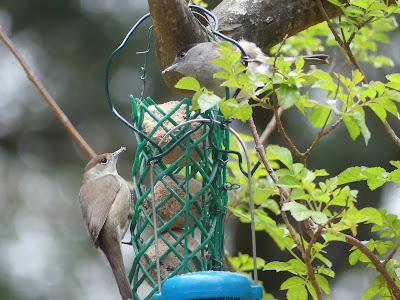







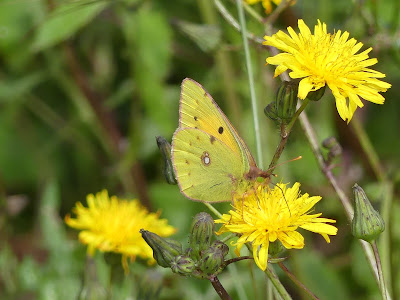

















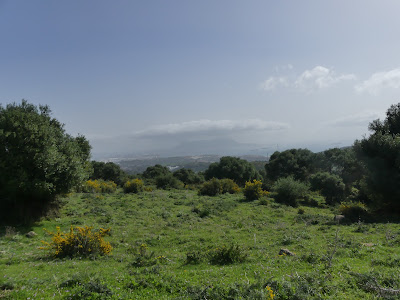
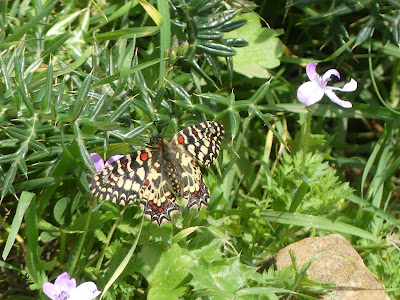





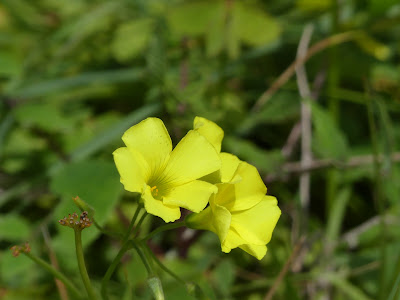

















































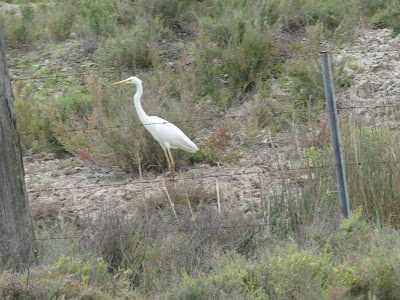


.JPG)
